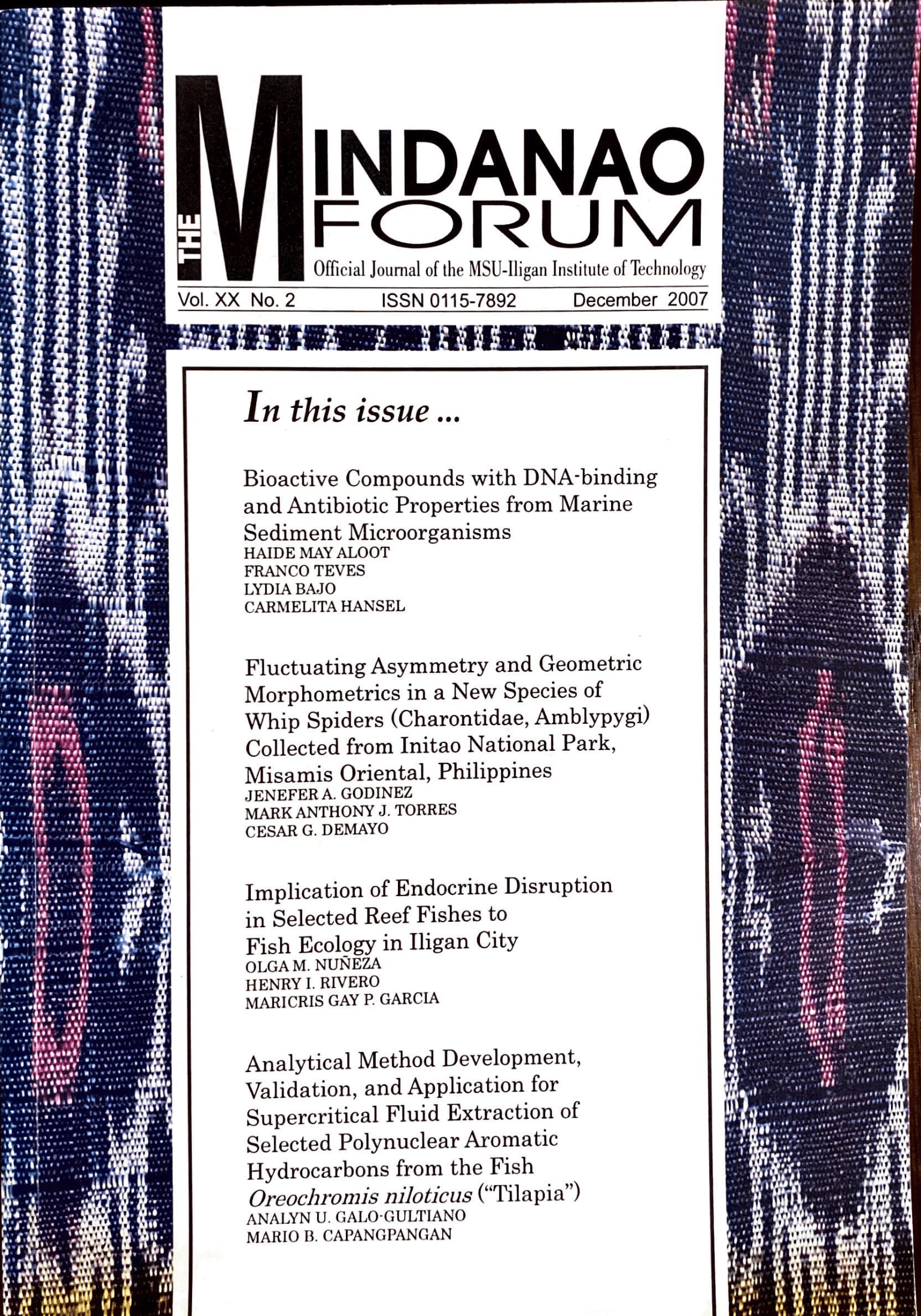Analytical Method Development, Validation, and Application for Supercritical Fluid Extraction of Selected Polynuclear Aromatic Hydrocarbons from the Fish Oreochromis niloticus ("Tilapia")
Abstract
Polynuclear aromatic hydrocarbons (PAHs) are ubiquitous environmental pollutants which accumulate in the fatty tissues of aquatic organisms. A Supercritical Fluid Extraction (SFE) method to extract selected PAHs (phenanthrene, fluoranthene, and pyrene) loaded onto Oreochromis niloticus (‘tilapia’) fish samples by simulated sorption process was developed and validated.
Method development results showed that extracts were efficiently cleaned using H2SO4 and florisil. The amount of PAH sorbed onto the fish (sorption experiments) increased with contact time, i.e., 29.51%, 35.43%, and 41.24% for 30 min, 1 hr, and 2 hrs, respectively. The corresponding % recoveries using SFE method increased from 72.43% for 30 min contact time to 81.31% for 1 hr contact time, but decreased to 71.61% for 2 hrs contact time. The decrease in overall SFE % recovery in the 2-hr contact time could be attributed to the degradation of the analytes into their metabolites.
Method validation results showed an overall % recovery of 85.06% (10.50% RSD) for SFE and 74.37% (13.79% RSD) for Soxhlet extraction, indicating that the developed SFE method is more accurate and more precise than Soxhlet method.
The validated method detected all the selected PAHs in the edible and inedible parts of "tilapia" from Pulangi IV Reservoir of Maramag Bukidnon (concentration range: 0.0058 - 0.0643 μ/g dry basis). The PAH levels in the inedible part were relatively higher than in the edible part. Of the PAHs tested, only fluoranthene in the inedible part of fish was below the US EPA maximum permissible level for the protection of human health.





